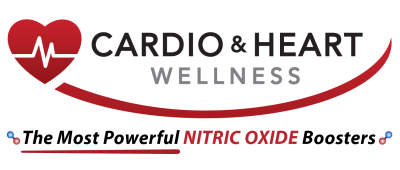Research Finds that Vitamin C can Greatly Benefit those with Heart Disease.

Today, Heart Disease, Especially Coronary Heart Disease, is the Leading Cause of Death Around the World.
We’re launching a series of discussions on the benefits of Vitamin C — scientifically demonstrating that atherosclerosis — the buildup of plaque in the arteries which leads to heart attacks — is preventable and even reversible. It can be done quite easily. You’re probably well aware that we at Cardio and Heart Wellness have made this assertion many times before as it relates to our products and how they bring the many, many benefits of increased Nitric Oxide levels in the blood.
Furthermore, our discussions on the benefits of Vitamin C will also demonstrate that heart disease, one of the most complex and frequently researched topics in all of medicine, is not too difficult to understand when looked at from a new perspective.
Vitamin C Deficiency
Simply stated, atherosclerosis is a disease that appears to be initiated by a deficiency of Vitamin C in the innermost lining of the arteries.
The innermost lining of the arteries, called the Intima, once damaged by a lack of Vitamin C, initiates and stimulates a host of different plaque-building processes – these processes set into motion for any particular individual depend on a variety of different cardiac risk factors, but the result, arterial blockage, is always the same.
Scurvy and the Focal Process
The disease that results from insufficient Vitamin C intake over an extended period, is typically thought of as a condition that affects the entire body equally. Clinically, scurvy is characterized by weakness, anemia, and a tendency to have easy bleeding into the tissues, especially the gums. In fact, scurvy is very often a much more localized, focal process. While focal scurvy does typically require some degree of generalized Vitamin C deficiency in the body, the overall body can clinically appear normally healthy with specific areas of the body displaying a severe deficiency in Vitamin C.
Examples of Focal Scurvy
Someone suffering from advanced periodontal disease is an example of a focal scurvy — as determined by gum biopsy specimens — will not usually display the other typical symptoms of scurvy in the rest of their body. Another localized disease, cataracts, can be considered a form of focal scurvy in the cornea. Similarly, atherosclerosis can readily be characterized as “arterial scurvy” due to the lack of Vitamin C in the arterial linings appears to always be the first identifiable starting point for the development of coronary heart disease.
How Does a Focal Scurvy Occur?
In the midst of what would normally be considered sufficient Vitamin C intake? The fact is, there are known conditions in the body that can accelerate the depletion of Vitamin C in certain tissues and structures. This is certainly the case in arterial scurvy.
For this reason, the treatment of arterial scurvy, while straightforward, requires attention to details rather than a simple Vitamin C supplementation. For numerous reasons, regular Vitamin C supplementation is of benefit to nearly everyone, and the general health can be expected to improve even if no other interventions are taken. It is also important to note that Vitamin C has been shown to improve Nitric Oxide (NO) production of the endothelium which helps to reduce high blood pressure.
An important first step to treating low Vitamin C levels would be to understand why a particular person has low levels of Vitamin C in their arterial linings in the first place.
Causes of Low Vitamin C Levels
In almost every case, the cause of low Vitamin C levels in the arterial linings is significant daily exposure to destructive toxins such as, but not limited to, cigarette smoke and some drugs. These toxins keep neutralizing (oxidizing) the body’s stores of Vitamin C thus making the maintenance of active (reduced or non-oxidized) Vitamin C levels in the various tissues of the body virtually impossible.
The arterial intima is especially prone to this localized deficiency. Whenever any toxins are released into the blood, the inner lining of the arteries is logically one of the first “destinations” for the toxins to gather and start neutralizing local Vitamin C stores, at least partly explaining why arterial scurvy is probably the most common form of focal scurvy.
Once Considered Rare – Prevention and Reversal Can Now Become Expected
This discussions on the benefits of Vitamin C might at first seem too involved or detailed. The proper removal of dental toxicity, especially root canal-treated teeth, is absolutely essential for minimizing an otherwise very large source of daily toxicity. Nutritional efforts to minimize daily toxin exposure absorbed from the gut is also extremely important. When a person’s daily toxin exposure to the body has been brought to a reasonable minimum, quality supplementation is freed of its burden of working to neutralize a large and relentless toxin exposure. Then, and only then, can the natural healing of the blood vessel proceed as the antioxidant and nutrient status of its inner wall becomes optimized. If you have been a regular reader of our posted discussions on the benefits of a healthy cardiovascular system — this is not new news to you.


